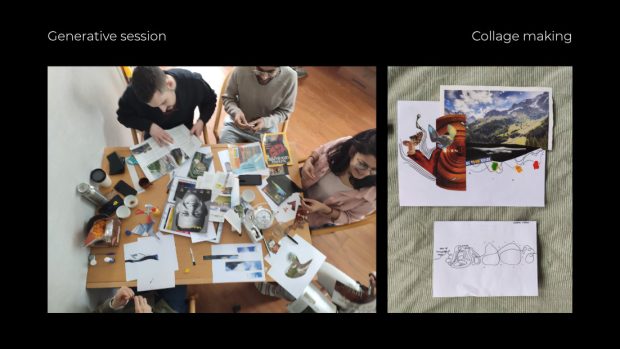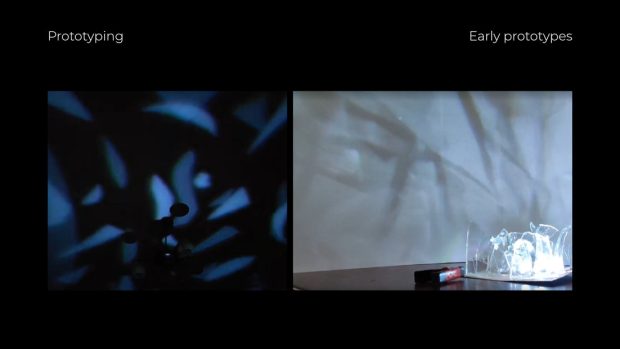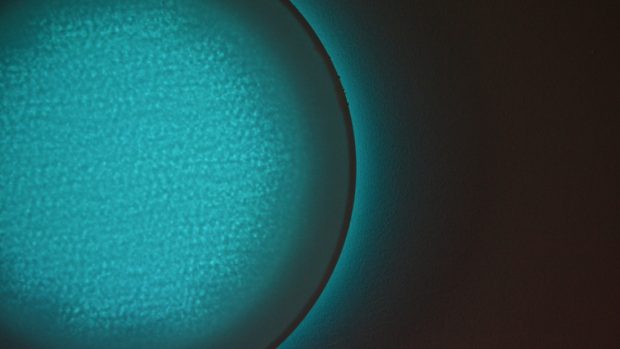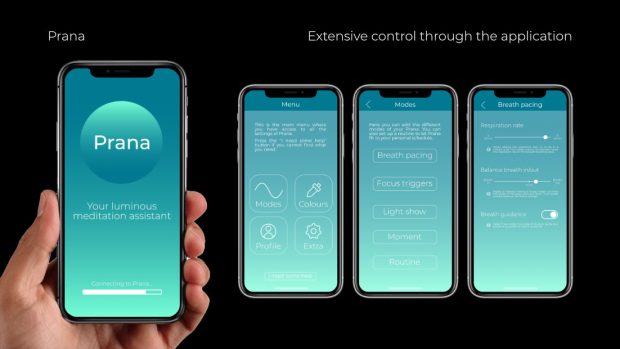By Gijs Spierings
We live in a fast paced world where we are constantly being stimulated by the world around us. We are constantly on the move, going from one appointment to the next while at the same time our smartphones are demanding our attention. This lifestyle takes a toll on our mental wellbeing. Meditation is often proposed as a way to deal with the mental health issues, to find more relaxation and calmness.
Meditation can have a significant impact on someone’s life. It can be seen as a training for your brain, as a set of tools that aim to encourage an increased state of awareness and focused attention, as well as a consciousness changing practice. The practice has been researched increasingly and proves mental, physical and physiological benefits. However, meditation is difficult to integrate in one’s life.
The goal of this project was to use light to support someone in their meditation journey. To find the right application the needs and wishes of the user, the possibilities of light had to be understood, to finally combine this knowledge into a product. Insights into the requirements of the user were gathered through three activities: literature research, qualitative interviews and a generative session.

Figure 1: Generative session
The research phase formed the basis of the project and concluded in a structure that showed the way someone can be supported in their meditation ritual. The structure showed three areas of support: First of all, Routine support, which helps the user to build a routine around the meditation ritual. Second, the support during the meditation session, which is meant to help a person get in the mood for the meditation session as well as the support during the meditation session that is intended to support a focus. Lastly, the connection of the ritual to everyday life, meaning that, for the meditation ritual to be part of someone’s life, it needs to be seen as a part of their life, instead of solely connected to the practice itself.

Figure 2: The structured overview of the research phase
Light is a mysterious phenomenon and the possibilities of light are endless. So, in order to find a suitable application, the possibilities of light had to be explored. This was done in various ways, amongst others: making drawings of possible light effects/atmospheres, finding inspirational images or videos, sketching ideas, digitally developing concepts and building different lighting prototypes. The goal of this creative process was to find an application of light that has both functional elements as well as aesthetic appeal. This means that during the process it was necessary to balance between the artistic side of light and the functional elements that fit to the requirements of the user. A lot of effort went into building prototypes with light, as the effect of light cannot be imagined, it has to be built and experienced.

Figure 3: Drawings and sketches of possible lighting effects

Figure 4: Explorative lighting prototypes
Insight into the possibilities of light and the needs of the user helped to define the design goal for this project, which sounds as follows: “I want to design a product that supports the user’s meditation ritual through an immersive and supportive experience using the mesmerizing qualities of light.” With this design goal in mind more lighting prototypes have been developed to define the end product.

Figure 5: More defined lighting prototypes
The final result of the project is Prana. Prana is an interactive wall-mounted lamp that is designed as your meditation assistant. The design goal was to find a balance between the aesthetic appeal and functional qualities of the lamp. Prana is designed to lower the boundary to start a meditation session while providing clear guidance through the process of a meditation session as well as strengthening the relationship the user has with the ritual.

Figure 6: The final design – Prana
The video below will clearly explain the interactions and effects of the device. Prana uses light to communicate information to the user and focusses on a simplistic interaction between the user and the product.
As meditation is very personal it is necessary that the user can personalize the experience of the device as much as possible. To fulfill this requirement an application has been designed where the user can personalize many features of the device like: colour of the light, duration or frequency of various effects and turning features on or off.

Figure 7: Prana application for extensive control
Thank you for reading about my project, I hope I did light up your day!
link to the graduation report
http://resolver.tudelft.nl/uuid:3f75908e-5120-4e5f-ad40-4d00f85d3ecc



